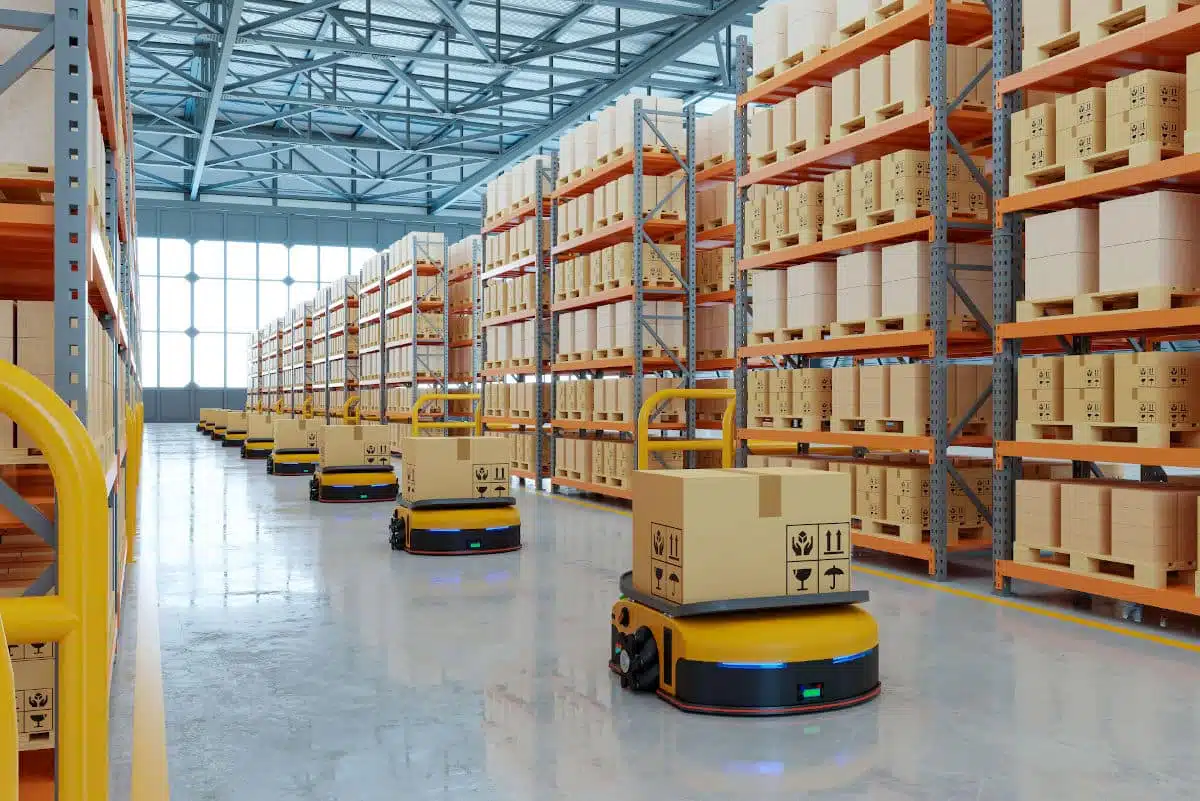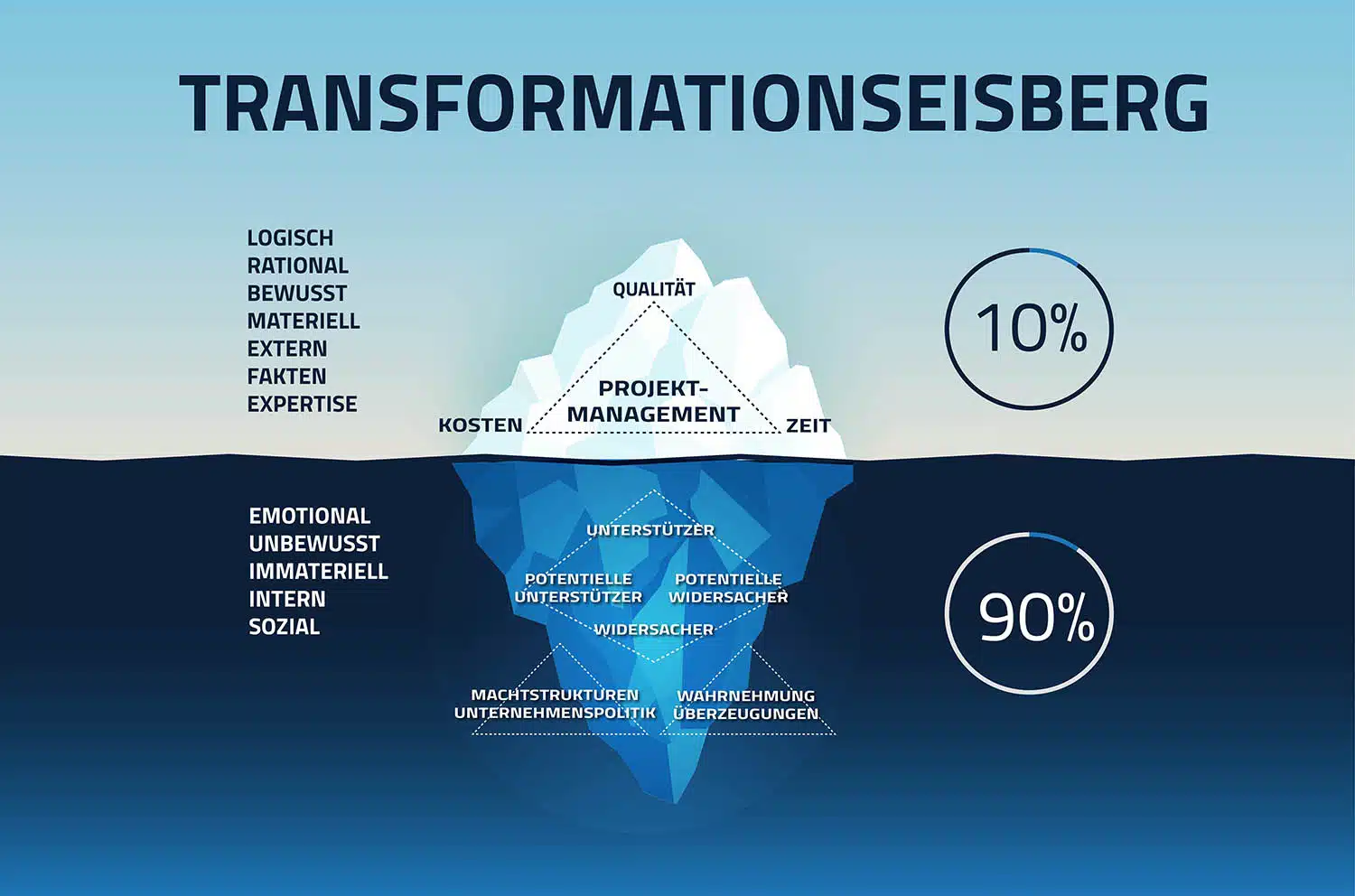Intralogistics projects are always primarily about one thing: optimisation. Throughput times should be reduced, capacities increased, costs lowered and processes made more resilient. Such optimisations usually go hand in hand with an increase in the level of automation in the warehouse. Accordingly, intralogistics projects always involve major changes. When considered in isolation, these are clearly defined change projects, but as a whole, large intralogistics projects are far more far-reaching, so that one can speak of a transformation of corporate intralogistics or even of the company itself. This is precisely why good transformation management is essential for the success of major intralogistics projects.
Change or transformation? - An attempt at differentiation
Change management, transformation management and organisational development are often used synonymously or understood as buzzwords that mean more or less the same thing. Despite all the overlaps, interactions and causalities, there are indeed various distinguishing features between change on the one hand and transformation on the other. A few points are listed below to help differentiate between the two:
- A change process has a concrete goal and is finished as soon as it is achieved. A transformation, on the other hand, is ongoing, without a concrete end.
- In a change process, the focus is on the smaller things and is sometimes very limited, whereas a transformation affects all individual areas from the big picture.
- Change primarily affects “doing”, while transformation also affects “being”.
- Accordingly, a transformation tends to reinvent a business unit or even the entire company. At the very least, it has a significant impact on the self-image of the respective department or the company as a whole.
- Change and transformation are mutually dependent. A transformation triggers various changes, but a change can also trigger a transformation.
Transformation in the warehouse - Challenges

In intralogistics, optimisation projects consist of individual modernisation measures that are change projects in themselves. Replacing old MDEs with the latest generation of equipment or introducing and integrating a new type of industrial truck are examples of a clearly definable change project. It has a beginning and an end, does not affect the entire intralogistics system and does not change the self-image of all employees in the warehouse.
However, if you want to leave your old intralogistics world behind and set off for new shores in order to enter a new intralogistics world – a transformation takes place. In general, the challenge in such a process is to simplify complexity. In addition, there are many other hurdles that need to be recognised and solved through transformation management:
- Previous processes have grown organically based on the requirements of the old world.
- Organically grown processes often go hand in hand with organically grown expertise that is closely linked to individual people and has often never been written down. The disadvantage: when people leave, the knowledge goes with them and does not remain in the company. The familiarisation period for new employees may also be correspondingly long.
- In predominantly manual intralogistics (i.e. the old world), specialising employees in areas, customers, products or product groups helps to keep quality and throughput high. In the much more automated new world, this specialisation is no longer required to the same extent thanks to supporting systems, which makes staff more flexible in their deployment. However, this loss of status can lead to dissatisfaction if it is not accompanied by appropriate communication and, above all, participation of the people concerned in the process.
- Therefore, despite all the technical innovations, transformation is primarily about people. It is important to always communicate clearly, listen to each other and make the right decisions for the new world together.
- The challenge is usually not incoming or outgoing goods, but the processes in between in the warehouse itself.
Transformation management in intralogistics - What really matters

The (all-encompassing) nature of a transformation harbours the risk that everyone transforms their own areas without having the big picture in mind, or that decisions are made for the big picture without actually seeing through the effects on individual areas. The only effective measure to avoid falling into this trap is the last point mentioned above – taking people with you. It is important to bear this in mind:
- For the new world, processes must be scrutinised and, if necessary, redesigned.
- This happens with all those directly involved in the process and also with indirect or only neighbouring participants.
- When it comes to questions about the quality and potential for improvement of processes, everyone who has few points of contact with these topics is also involved. They can also contribute feedback and perspectives, which increases acceptance of the transformation or the individual project on a broader basis and contributes to a particularly open feedback culture.
- The workers are often the central instance in the workflow, which is why they should be given the best possible support (minimising paths and throughput times, ergonomically correct handling, new personnel are guided through the process step by step by the system). They also indirectly define the benchmark for how user-friendly the individual measures actually are. After all, significantly reduced error rates also mean margins.
- There should be a climate of co-operation in which everything can be discussed openly and the most pragmatic approach is always sought. This ensures that solutions are not determined by fashions and trends (in the world of technology).
- You should always be able to accept and implement changes during the course of the project.
- If you create solutions, you must also create understanding for the solutions. One way to do this is through transparency and by always being able to answer questions.
Of course, the other aspects that are not directly related to people are just as important. For example, the basic requirements, calculation principles and growth strategies should be scrutinised again before starting a project. In general, all automation projects, especially large-scale projects that leave an old world and create a new one, are about being able to break down processes to such an extent that in most cases they run automatically. All subtleties, refinements and individualisations should then be able to be decoupled from these processes and coupled back in as smartly as possible. The prerequisite for this is that processes are described very precisely and, above all, prioritised. The best way to consolidate (new) knowledge is to pass it on. In other words, no face-to-face training sessions with all users, but rather targeted, intensive workshops for a few, who in turn pass on their knowledge to their colleagues.
The transformation to the new world also means saying goodbye to the old world. If you used to have the feeling of full control through paper, telephone and Excel spreadsheets, then it is only human to feel a certain emptiness and insecurity at first.
Transparency, participation and rapid integration of feedback
Good transformation management is based on correct, transparent communication that includes all those directly involved in the transformation as well as as many indirectly involved actors and stakeholders – people – as possible. Good transformation management changes the mindset towards continuous optimisation, paves the way for further, future change and increases the company’s resilience. Service, support and care at an excellent level are the guarantors for a successful transformation in intralogistics.